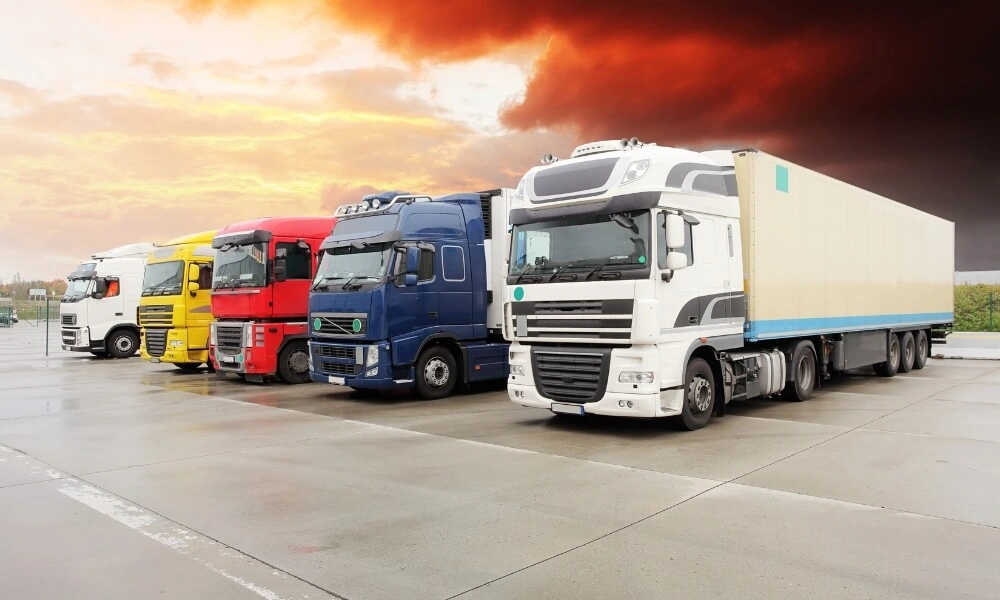Workplace transportation is an essential component of numerous industries, aiding in efficiently moving goods, equipment, and personnel. Yet, with this necessity comes an array of potential hazards. Vehicle accidents, pedestrian collisions, improper loading and unloading, and other risk factors can create dangerous situations, potentially leading to injuries or even fatalities.
Understanding these hazards is the first step to mitigation. The second is implementing control measures designed to reduce the likelihood of these incidents. As such, this blog aims to provide valuable insights into 10 common transportation hazards in the workplace and offer effective control measures to keep your workforce safe and your operations running smoothly.
From dealing with high-speed vehicle operation to addressing issues with loading and unloading, we’ll delve into each hazard, explaining its potential consequences and sharing proven strategies to mitigate these risks. This information serves as a guide for health and safety officers and anyone involved in workplace transportation, ensuring a safety culture permeating all levels of an organization.
Workplace safety is a shared responsibility. By arming ourselves with knowledge and taking proactive measures, we can greatly reduce transportation-related hazards and foster a safer, healthier working environment. So, let’s get started and examine these 10 common transportation hazards and their respective control measures.
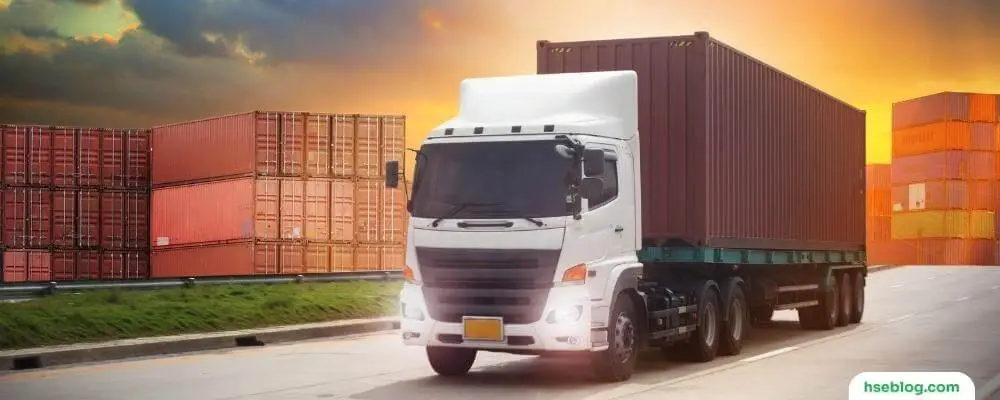
Transportation Hazards and Control Measures
Transportation hazards in the workplace can lead to accidents and serious injuries. Identifying these hazards and implementing control measures can help ensure the safety of employees and visitors. Here are 10 common transportation hazards and control measures.
1. Collision with Pedestrians
This refers to the risk of vehicles operating within a workplace coming into contact with workers or visitors who are on foot. This risk is particularly high in environments where heavy machinery like forklifts or trucks operates alongside pedestrians. It’s one of the most serious transportation hazards, as it can lead to severe injuries or even fatalities.
Collisions can occur due to several factors:
- The vehicle operator may not see the pedestrian due to blind spots, especially when reversing or making turns.
- Pedestrians might not hear the vehicle approaching, particularly in noisy environments, or they may underestimate its speed.
- In areas with high traffic and people activity, the likelihood of such collisions increases, especially if there are no defined paths for pedestrians and vehicles.
- The risk is also higher when distractions like mobile devices or visibility are poor due to factors like lighting or weather conditions.
Control Measures:
- Designated Pedestrian Walkways and Crossings: By marking specific pathways for pedestrian use and setting designated crossings, you create a physical separation between vehicles and pedestrians. It is critical that these paths are well-lit, clearly marked, and unobstructed at all times. Regular audits should be carried out to ensure these paths remain in good condition and are used appropriately.
- Safety Barriers: Physical barriers should be installed to separate pedestrian areas from vehicle routes. This could be railing, fencing, or even planters. The aim is to create a physical deterrent to prevent pedestrians from accidentally straying into vehicle paths and vice versa.
- Safety Awareness Training: Both vehicle operators and pedestrians should receive regular training about the risks involved and how to mitigate them. Vehicle operators should be trained on safe driving practices within the workplace, focusing on awareness of pedestrians. On the other hand, pedestrians should be aware of the risks involved in moving vehicles, blind spots, and the importance of sticking to designated walkways.
Implementing these control measures significantly reduces the chances of collisions between vehicles and pedestrians, thereby improving the overall safety of the workplace environment.
2. People Falling from Vehicles
Falling from a vehicle may not immediately come to mind as a common workplace hazard. Still, it is a significant risk, especially in industries where workers frequently enter or exit vehicles, such as trucking, construction, or warehousing. This hazard can result in severe injuries, including sprains, fractures, and head injuries.
There are several reasons why this can happen:
- Slippery or unstable surfaces on the vehicle.
- The worker is in a rush and does not take the necessary precautions when climbing on or off the vehicle.
- The vehicle does not have proper handholds or steps for safe access and egress.
- Lack of training or disregard for safe entry and exit procedures.
Control Measures:
- Safe Access and Egress Points: Vehicles used in the workplace should be fitted with secure, non-slip access points, like steps and handrails, to aid in safely climbing onto and off the vehicle. If these are not part of the vehicle’s design, supplementary equipment, such as ladders or platforms with railings, should be provided. These access points should be regularly inspected to ensure they are in good condition and defects-free.
- Training on Safe Methods of Vehicle Entry and Exit: All workers who use vehicles must be trained on the correct procedures for safely entering and exiting the vehicle. This training should cover the importance of using handrails or handles, the danger of jumping down from the vehicle and ensuring footwear and the vehicle’s steps are free from mud, oil, or other substances that could cause slips.
- Regular Safety Reminders and Monitoring: Regular reminders about the importance of safe entry and exit can help to keep this issue at the forefront of workers’ minds. Supervisors should monitor vehicle use to ensure workers follow the correct procedures, and disciplinary measures should be in place for non-compliance.
Implementing these control measures can significantly reduce the risk of falls from vehicles, contributing to a safer working environment.
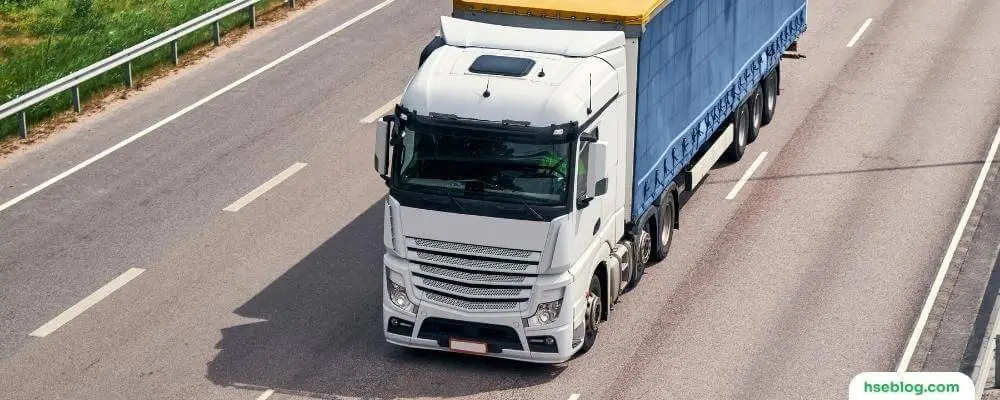
3. Objects Falling from Vehicles
This risk is inherent in workplaces involving transporting goods or equipment. When loads are improperly secured, they can shift or fall during transit, posing a serious risk to other workers, vehicle operators, and even members of the public. Falling objects can cause minor cuts and bruises to serious head injuries or crush incidents.
Several factors contribute to this risk:
- Inadequate or incorrect use of restraints, such as ropes, chains, or ratchet straps.
- Overloading vehicles beyond their specified capacity.
- Poorly stacked or unbalanced loads.
- Rapid acceleration, deceleration, or sharp turns can destabilize the load.
Control Measures:
- Training in Load-Securing Techniques: All workers loading and unloading vehicles should receive thorough training in proper load-securing techniques. This includes understanding the vehicle’s load capacity, distributing weight evenly, and correctly using restraints and other load-securing equipment.
- Routine Inspections: Even with the best training, mistakes can still happen. Routine inspections are crucial to ensure loads are secure before moving the vehicle. Supervisors or designated safety officers should check that the load is not over the vehicle’s capacity, that it’s evenly distributed, and that all restraints are correctly applied and in good working condition.
- Use of Proper Equipment: Always ensure the correct loading equipment is available and in good condition. This includes restraints and things like forklifts for heavy items, non-slip gloves for manual loading, and personal protective equipment (PPE) such as hard hats and steel-toed boots to protect against accidental drops.
- Safe Driving Practices: Vehicle operators should be trained to drive in a manner that reduces the risk of destabilizing the load. This includes avoiding rapid acceleration and deceleration, taking corners gently, and observing speed limits.
By implementing these control measures, the risk of objects falling from vehicles can be significantly reduced, thereby enhancing overall safety in the workplace.
4. People Being Struck by an Overturning Vehicle
Overturning vehicles are a significant hazard in many industries, including construction, warehousing, agriculture, etc. This is because many work vehicles have a high center of gravity, making them more susceptible to tipping. When a vehicle overturns, it can cause serious injuries or even fatalities to the driver and anyone nearby.
The risk of a vehicle overturning is often due to several factors:
- Driving too fast, especially around corners or on uneven ground.
- Overloading the vehicle or improperly loading it, so it’s unbalanced.
- Vehicle instability due to poor maintenance or faulty design.
- Operating the vehicle on uneven or unstable ground.
Control Measures:
- Regular Vehicle Maintenance: Regularly maintaining and checking the vehicles used in the workplace can help to identify and correct any issues that could lead to instability. This should include checks on tires, brakes, suspension systems, and loading mechanisms.
- Driver Training: Training for drivers should include understanding the risks of overturning, recognizing the signs of an unstable load, and knowing how to drive safely to reduce the risk. This may involve driving at reduced speeds, taking extra care on corners, and being aware of the load distribution within the vehicle.
- Safe Loading Practices: Loads should be evenly distributed and not exceed the recommended weight limits for the vehicle. The use of heavy equipment like forklifts can help ensure that loads are placed correctly and safely.
- Risk Assessments: Performing risk assessments can help identify potential hazards contributing to vehicle overturns, such as uneven ground, steep slopes, or areas with heavy pedestrian traffic. Once identified, these risks can be mitigated by improving ground conditions, rerouting traffic, or setting up exclusion zones around high-risk areas.
- Use of Safety Equipment: Where applicable, seat belts and roll-over protection structures (ROPS) can help protect drivers if a vehicle does overturn.
By focusing on these control measures, businesses can reduce the risk of vehicles overturning in the workplace, thereby enhancing the safety of their employees.
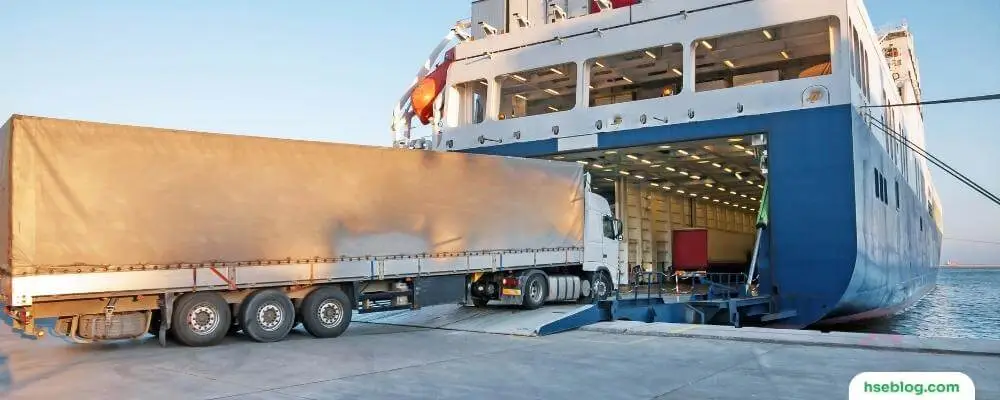
5. Injuries While Inside a Vehicle during a Collision
Accidents involving vehicles are a major concern in many workplaces, especially those that involve high-traffic areas or heavy machinery. Employees inside vehicles during a collision are at risk of sustaining various injuries, ranging from minor bruises to serious conditions such as whiplash, fractures, and even traumatic brain injuries. Even low-speed collisions can result in significant injuries due to the size and weight of many workplace vehicles.
Several factors contribute to this risk:
- High-speed driving or failure to observe speed limits.
- Lack of or improper use of safety equipment, such as seatbelts.
- Poorly maintained vehicles with faulty brakes, steering, or other critical systems.
- Inadequate driver training or reckless driving behaviors.
Control Measures:
- Use of Seat Belts: In vehicles equipped with them, seat belts are one of the most effective ways to prevent injuries during a collision. All drivers and passengers should be encouraged to use seat belts when the vehicle is in motion.
- Safe Driving Practices: Safe driving should always be promoted and enforced. This includes observing speed limits, maintaining a safe distance from other vehicles, and avoiding distractions while driving. Regular training sessions can be useful to reinforce these behaviors and update employees on any changes to safety protocols or regulations.
- Regular Vehicle Maintenance: A regular vehicle maintenance program can help ensure that all vehicle components, such as brakes and steering, are in good working condition, thus reducing the risk of accidents.
- Driver Training: Comprehensive driver training can help to minimize the risk of accidents. This training should cover basic vehicle operation, defensive driving techniques, and how to react in emergencies.
- Collision Avoidance Technology: If feasible, consider equipping vehicles with collision avoidance technology. This can include features such as reversing cameras, proximity sensors, and automatic braking systems.
By incorporating these control measures into your workplace safety protocols, you can help minimize the risk of injuries inside a vehicle during a collision.
6. Vehicle Overturning
Overturning of vehicles is a significant risk, especially in industries where heavy machinery or large vehicles are used. This can occur when a vehicle is improperly loaded, driven too quickly, especially around corners, or operated on unstable or uneven surfaces. Overturning can result in severe injuries to the driver or nearby workers and can cause substantial property damage.
Several factors can increase the risk of vehicle overturning:
- Incorrect loading of the vehicle, which can make it unstable.
- Driving too quickly for the conditions or the type of vehicle.
- Operating the vehicle on uneven or unstable ground.
- Lack of maintenance, leading to mechanical failure.
Control Measures:
- Proper Training: Ensuring all drivers receive thorough training on safe vehicle operation is essential. This should include how to correctly load and unload the vehicle to maintain balance, how to judge the stability of the vehicle, and how to drive safely to minimize the risk of overturning.
- Regular Inspections: Inspect vehicles to ensure they are in safe working condition. This should include checking the tires, brakes, steering, and other critical systems. Additionally, loads should be inspected before the vehicle is operated to ensure they are secure and correctly balanced.
- Safety Equipment: Equip vehicles with appropriate safety equipment, such as seat belts and roll-over protection systems, to protect drivers in the event of an overturn. Ensure drivers are trained on the proper use of this equipment.
- Safe Work Practices: Implement safe work practices, including speed limits, rules for safe loading and unloading, and procedures for working on or around unstable or uneven ground. These should be clearly communicated to all workers and regularly enforced.
By focusing on these control measures, the risk of vehicles overturning in the workplace can be significantly reduced, enhancing the safety of all workers.
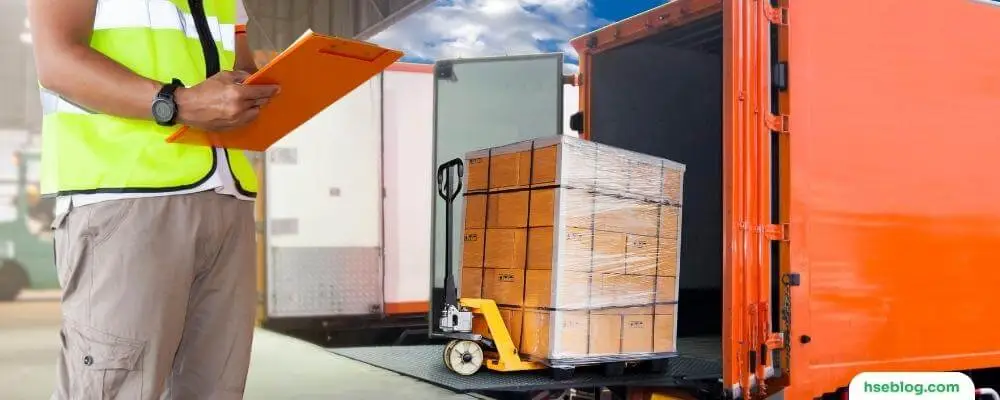
7. Poor Road Conditions
Road conditions are a significant factor in the safety of workplace transportation. Poorly maintained roads, such as those with potholes, loose gravel, or uneven surfaces, can cause vehicles to lose control, resulting in accidents. Similarly, inadequate lighting can make it difficult for drivers to see potential hazards or other vehicles, increasing the likelihood of collisions.
Several conditions can contribute to this hazard:
- Potholes or cracks in the road surface.
- Loose gravel or other unstable road materials.
- Uneven surfaces, such as bumps or dips in the road.
- Inadequate lighting makes it difficult for drivers to see potential hazards.
Control Measures:
- Regular Maintenance: Conduct regular maintenance on all roads used for workplace transportation. This should include filling in potholes, repairing cracks, and ensuring the surface is even and stable.
- Good Lighting: Ensure that all roads are adequately lit, especially in areas where vehicles frequently operate. This will make it easier for drivers to see potential hazards and other vehicles, reducing the likelihood of accidents.
- Use of Signage: Clearly marked signs warning of potential road hazards, like uneven surfaces or sharp corners, can help drivers prepare and adjust their driving accordingly. These signs should be well-lit and placed in visible locations.
- Traffic Control Measures: Implement and enforce speed limits to ensure that vehicles are driven at safe speeds given the road conditions. Other traffic control measures, such as speed bumps or rumble strips, can encourage safe driving.
By maintaining good road conditions and implementing these control measures, employers can significantly reduce the risk of vehicle-related accidents in the workplace.
8. Lack of Driver Training
Without proper training, drivers may not understand how to safely operate vehicles or respond to potential hazards. This lack of understanding can increase the risk of accidents, potentially causing injury to the driver and others and property damage.
Several issues arise when drivers are not adequately trained:
- Inability to correctly operate the vehicle, leading to mishandling or misuse.
- Lack of understanding of safety protocols, including load securing, vehicle maintenance, and safe driving practices.
- Inexperience with handling emergency situations or unexpected hazards.
- Misjudgment of vehicle capacity or limitations.
Control Measures:
- Comprehensive Driver Training: Provide all drivers with comprehensive training before they are permitted to operate vehicles. This training should cover the basics of vehicle operation, safety protocols, handling of emergency situations, and any specific instructions related to the types of vehicles they will be driving.
- Regular Refresher Training: Even experienced drivers can benefit from regular refresher training to keep their skills sharp and up-to-date with any changes in safety protocols or vehicle operation procedures.
- Certification and Validation: Ensure that all drivers have valid licenses or certificates for the types of vehicles they are operating. Regularly validate their certifications and keep a record of their training.
- Enforce Safety Procedures: Ensure all drivers understand and follow the safety procedures. This includes proper use of safety equipment, adherence to speed limits, safe loading and unloading practices, regular vehicle inspections, and compliance with other safety protocols.
By investing in comprehensive and regular driver training, employers can significantly reduce the risk of accidents caused by driver error or lack of understanding. This not only helps protect drivers but also contributes to the overall safety of the workplace.

9. High Speed
Speed is a common factor in many workplace transportation accidents. When vehicles are driven at high speeds, the driver has less time to react to unexpected situations or hazards. This can increase the likelihood of collisions or loss of control, leading to potentially severe accidents.
Issues caused by high speed can include:
- Increased stopping distance: The faster a vehicle is moving, the longer it takes to come to a complete stop. This can be problematic if a hazard suddenly appears or another vehicle unexpectedly stops.
- Decreased control: Vehicles can become more difficult to control at higher speeds, particularly when turning or maneuvering.
- Greater force in collisions: The faster a vehicle moves, the more force it will exert in a collision, which can lead to more serious damage or injuries.
Control Measures:
- Speed Limits: Implement and enforce speed limits appropriate to the workplace environment and the types of vehicles being used. Speed limits should be clearly posted and communicated to all drivers.
- Speed Governor Devices: Install speed governors in vehicles if necessary. These devices can mechanically limit the top speed of a vehicle, providing an additional layer of control over vehicle speed.
- Driver Training: Ensure drivers are aware of the dangers of speeding and are trained in safe driving practices. This should include understanding how to adjust their speed based on road conditions, vehicle load, and other factors.
- Monitoring and Enforcement: Regularly monitor driving practices and enforce the speed limits. Penalties for speeding should be clearly defined and consistently applied.
By controlling vehicle speed, employers can significantly reduce the risk of accidents caused by high speed, contributing to a safer workplace environment.
10. Unsafe Vehicle Loading/Unloading
Unsafe or incorrect loading and unloading of goods can cause various issues, including unbalanced loads that make vehicles difficult to control or cause them to tip over, loads that shift during transport and cause accidents, and items that fall off vehicles and pose hazards to other workers or pedestrians.
Problems related to unsafe vehicle loading/unloading might include:
- Insecure loads that may fall during transport, potentially causing damage or injury.
- Unbalanced loads that can make the vehicle unstable and prone to tipping or rolling over.
- Overloading that can put excess strain on the vehicle and make it harder to control.
- Items projecting from the vehicle that can cause damage or injury.
- Manual handling injuries incurred during the loading/unloading process.
Control Measures:
- Training on Safe Loading/Unloading Techniques: Provide all workers in loading and unloading vehicles with thorough training on safety procedures. This should cover how to balance loads, secure items, prevent overloading, and safely handle goods to avoid manual handling injuries.
- Load Securement Equipment: Use appropriate equipment to secure loads, such as straps, chains, and blocks. Regularly inspect this equipment to ensure it is in good condition and fit for purpose.
- Vehicle Inspection: Regularly check vehicles to ensure they are not overloaded and their loads are secure and balanced. If necessary, adjust loads or remove items before the vehicle is driven.
- Safe Handling Equipment: If manual loading/unloading is required, provide suitable equipment, such as hand trucks or pallet jacks, to minimize the risk of injury. Train workers on proper manual handling techniques and the use of these tools.
By implementing these measures, employers can ensure safer vehicle loading and unloading, reducing the risk of accidents and injuries in the workplace.
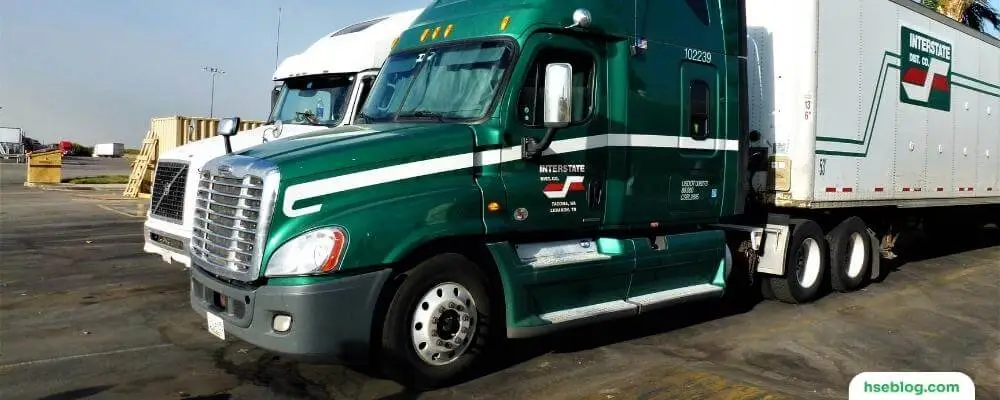
Additional Control Measures for safe workplace transport operations
Any control strategy involving vehicle operations will include a risk assessment to ascertain where, on traffic routes, accidents are most likely to happen. The risk assessment must examine internal and external traffic routes, particularly when goods are loaded and unloaded from lorries. It should also assess whether designated traffic routes are suitable for the purpose and sufficient for traffic volume.
The following need to be addressed:
- Traffic routes, loading, and storage areas must be well designed with enforced speed limits, good visibility, and the separation of vehicles and pedestrians whenever reasonably practicable.
- Environmental considerations, such as visibility, road surface conditions, road gradients, and changes in road level, must also be considered.
- The use of one-way systems and separate site access gates for vehicles and pedestrians may be required.
- The safety of public members must be considered, particularly where vehicles cross public footpaths.
- All external roadways must be appropriately marked, particularly where there could be doubt on the right of way, and suitable direction and speed limit signs should be erected. While there may well be a difference between internal and external speed limits, all speed limits must be observed.
- Induction training for all new employees must include the location and designation of pedestrian walkways and crossings and the location of areas in the factory where pedestrians and forklift trucks use the same roadways.
- The identification of recognized and prohibited parking areas around the site should also be given during these training sessions.
Many industries have vehicles designed and used for specific workplace activities. The safe system of work for those activities should include:
- details of the work area (e.g., vehicle routes, provision for pedestrians, signage);
- details of vehicles (e.g., type, safety features, checks, maintenance requirements);
- information and training for employees (e.g., driver training, traffic hazard briefing);
- type of vehicle activities (e.g., loading and unloading, refueling or recharging, reversing, tipping).
To summarise, there are three aspects to a control strategy for safe workplace transport operations:
The design of the site (safe site)
It involves managers in the following:
- Planning routes to separate pedestrians from vehicles whenever possible;
- Reducing the need to reverse by using one-way systems;
- Avoiding steep gradients and overhead cables and providing traffic routes on firm ground, minimizing sharp and blind corners;
- Marking out parking areas for vehicles;
- Providing speed limit signs and traffic warning signs;
- Ensuring a well-lit environment; and
- Maintaining good housekeeping and a tidy site.

2. Vehicle selection and maintenance (safe vehicle)
It requires the provision of the following:
- Vehicles with suitable and effective headlights, brakes, bumpers, and horns; sufficient mirrors to reduce blind spots; and seat belts for drivers and passengers;
- Some additional vehicle features, such as a rear lens or radar sensors to provide extra safety when reversing and speed governors; and
- A regular and documented inspection and maintenance regime.
3. Systems of work for system operatives (safe drivers)
- Adequate supervision of everyone who is in areas where vehicles operate, including the provision of banksmen when required;
- Adequate training and refresher training for all drivers;
- Relevant information for all drivers, including speed limits and parking areas;
- Regular health checks on the suitability of employees for driving roles;
- The provision of high visibility clothing, appropriate protective clothing (such as steel toe-capped boots and hard hats);
- The control of vehicle movements at times of day when more people are moving around. Access to vehicle areas should be restricted to those that need to be there.
Conclusion
Safety in transportation operations is an integral part of any organization, whether in a workplace or a public setting. This blog post has highlighted the 10 most common transportation hazards, ranging from collisions with pedestrians to unsafe vehicle loading and unloading. By identifying these hazards, we take the first step towards preventing accidents and enhancing safety.
Each hazard comes with its unique control measures. These are not one-time fixes but continuous processes that must be reviewed and updated as necessary. They revolve around regular maintenance, proper training, effective communication, and strategic planning.
Moreover, we discussed the overarching principles that should guide safe workplace transport operations beyond these specific hazards and their controls. These include ensuring a safe site, a safe vehicle, and safe drivers, with a comprehensive risk assessment underpinning the entire strategy.
Remember, safety is everyone’s responsibility. It requires the collective effort of all individuals involved, from drivers and pedestrians to managers and safety officers. Everyone has a role in promoting safety, following best practices and adhering to safety rules and regulations. After all, a safe transportation environment prevents accidents and injuries and contributes to productivity and morale.

